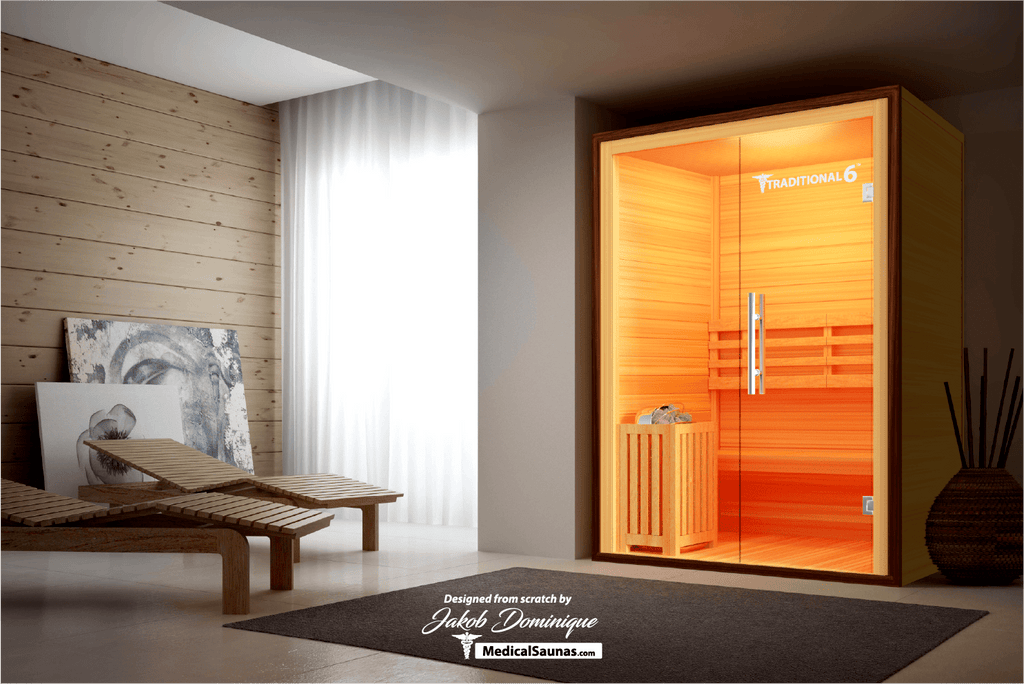Traditional Sauna Fundamentals Explained
Traditional Sauna Fundamentals Explained
Blog Article
Some Ideas on Traditional Sauna You Should Know
Table of ContentsThe 5-Minute Rule for Traditional SaunaThe Basic Principles Of Traditional Sauna A Biased View of Traditional SaunaTraditional Sauna Can Be Fun For Anyone
The majority of the weight shed in a sauna is water loss and is re-gained upon rehydrating. Without a doubt sauna can be a vital component of a healthy weight loss program. To check out the differences between traditional and IR saunas, I will divide these right into verifiable, theoretical, and fabricated distinctions.Thus, the hottest point in the saunawhich is at the ceiling straight above the sauna heateris generally between 185 and 190 F. Traditional Sauna. Claims that a typical sauna goes beyond 200 F is just not real and not appropriate for electrical saunas marketed in the United States. The temperature level for a far-infrared sauna is usually set between 120 and 140 F; however, unlike the typical sauna, the goal in and IR room is not to accomplish a high temperature
Because of this, the temperature level distinction is almost irrelevant, since profuse sweating causes both sauna types, yet the approach of heating up the body is different. In an IR sauna the bather will really feel warm and will certainly sweat a lot, however at much reduced temperature levels. Thus, if the objective is to invest longer amount of times in the sauna, the IR sauna is a good choice.

The Greatest Guide To Traditional Sauna
When the high temperature level is attained, the aspects cycle on and off to keep the heat. Many typical sauna individuals delight in putting water over the rocks to develop vapor to elevate sauna moisture degrees. The benefits of putting water over the rocks include: making the room much more comfy, dampening the nasal passages, and allowing the use of aromatherapy by blending vital oils with the water.
In a far-infrared sauna, the warm front penetrate the body to properly warm the body and increase the body core temperature level. To achieve this raised temperature level, Far-infrared emitters create infrared energy which is close to the same wavelength as that which the body naturally emitsoften referred to as the "Vital Range" of 7 to 14 microns), so the energy is well received by the body.
When the energy enters the body, it causes the body temperature level to boost and eventually causes sweat. In an infrared sauna it is essential for the emitters/heaters to remain on almost regularly. Given that there is no mass of rocks to preserve warmth, the sauna will certainly cool if the emitters shut down.
As stated over, the sauna bather in an infrared area desires to place himself in front of running emitters to get maximum take advantage of the warm. The heating time for the two rooms can be extremely various, depending on just how the areas are used. For a typical sauna, a bather needs to permit 30-40 minutes for the room to attain a desired temperature level and to correctly pre-heat the rocks.
What Does Traditional Sauna Mean?
A well built sauna will usually attain a temperature of 150-160 F in useful site about 30-40 mins. For hotter temperatures, the space may need to heat for a longer duration.
To some, 15 mins why not look here was "thrown away" while the infrared energy heated the wood panels as opposed to heating a body, while others locate a pre-heated space to be extra comfy and think a raised beginning temperature level is essential to begin perspiring. The size of advised usage for each area is approximately the very same (10-15 minutes per session); nonetheless, because of the lower air temperatures and the capacity to really feel the results of infrared warm much faster than a conventional sauna, it is not uncommon for an individual to invest a total of 20-30 minutes in an infrared sauna.
Conventional saunas tend to be bigger (thus use more electricity) than infrared saunas, although conventional saunas are definitely available in one and 2 person sizes. For a two-person standard sauna, 5x6 or 5x7 dimension is most preferred. The leading bench can conveniently seat two or three individuals and is additionally long enough to rest during the sauna session.


The average expense per kWH of power in the U.S. is about $0.11, so a 4.5 kW heater will certainly cost about $.50 to run for one hour, if the heating system runs continuously for one hour. Generally a sauna heating unit will certainly run for 75% of the initial hour and 50% of succeeding hours on considering that Check Out Your URL the aspects cycle once the established temperature level is achieved.
How Traditional Sauna can Save You Time, Stress, and Money.
A 2 person far-infrared space is normally physically smaller than a traditional sauna, typically about 4' x 4' or smaller. The IR heating unit is usually 1.5-1.7 kW using a 120 volt 15 amp plug-in service. Since the area can be utilized sooner than a sauna area, we will certainly presume the space is utilized for to of an hour consisting of heat up time.
Lastly, there is a hardly ever reviewed distinction in the social experience between the 2 areas. While our culture has lost some of the social advantage of the standard sauna experience, it can be extremely socially satisfying. From household time in the sauna, to heart-felt conversations with loved ones, to sauna partiesthe conventional sauna experience can cause intimate socializing.
The majority of higher end infrared spaces include colored light treatment, audio systems and full-glass fronts.
Report this page